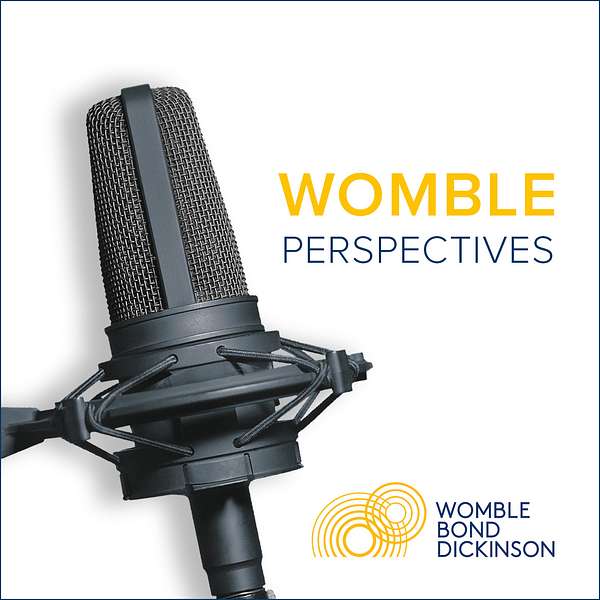
Womble Perspectives
Welcome to Womble Perspectives, where we explore a wide range of topics from the latest legal updates to industry trends to the business of law. Our team of lawyers, professionals and occasional outside guests will take you through the most pressing issues facing businesses today and provide practical and actionable advice to help you navigate the ever-changing legal landscape. With a focus on innovation, collaboration and client service, we are committed to delivering exceptional value to our clients and to the communities we serve.
Womble Perspectives
The FCC’s New Move on Connected Vehicle Tech
Today, we’re taking a closer look at a significant move by the Federal Communications Commission—one that could reshape the future of connected vehicle technology in the United States.
About the authors
Welcome to Womble Perspectives, where we explore a wide range of topics, from the latest legal updates to industry trends to the business of law. Our team of lawyers, professionals and occasional outside guests will take you through the most pressing issues facing businesses today and provide practical and actionable advice to help you navigate the ever changing legal landscape.
With a focus on innovation, collaboration and client service. We are committed to delivering exceptional value to our clients and to the communities we serve. And now our latest episode.
Welcome to Womble Perspectives, where we explore the legal, regulatory, and technological shifts shaping our connected world. Today, we’re taking a closer look at a significant move by the Federal Communications Commission—one that could reshape the future of connected vehicle technology in the United States.
Let’s start with the basics.
The FCC recently proposed adding certain connected vehicle technologies to its Covered List. Now, if you’re not familiar with that term, the Covered List is essentially a catalog of communications equipment and services that the FCC believes pose a threat to national security. Once something is on that list, federal funds can’t be used to purchase or support it.
So why is this important?
Because the technologies in question—known as V2X, or vehicle-to-everything communications—are foundational to the future of transportation. V2X allows vehicles to communicate not just with each other, but with traffic infrastructure, pedestrians, cyclists, and even the cloud. It’s what enables real-time traffic updates, collision avoidance systems, and eventually, fully autonomous driving.
But here’s where it gets complicated.
Some of the companies developing and supplying V2X technologies have ties to foreign governments that the U.S. considers adversarial. The concern is that these technologies, if compromised, could be used to collect sensitive data, disrupt transportation systems, or even be weaponized in a cyberattack.
The FCC’s proposal is a preemptive move—an effort to close potential security gaps before they become real-world threats. It’s part of a broader national strategy to secure critical infrastructure, especially as more of our daily lives become dependent on digital connectivity.
But this isn’t just about cars. It’s about the convergence of mobility, data, and national security. As vehicles become more like rolling computers, the lines between transportation and telecommunications are blurring. And that means the regulatory frameworks that once applied to phones and routers are now being extended to the automotive world.
For automakers, this raises big questions. How do you ensure your supply chain is secure? How do you vet your technology partners? And how do you balance innovation with compliance?
For state and local governments, especially those investing in smart city infrastructure, the implications are just as significant. If certain V2X technologies are restricted, it could affect everything from traffic management systems to emergency response coordination.
And for consumers? It’s a reminder that the cars we drive—or that drive us—are part of a much larger digital ecosystem. One that’s increasingly under scrutiny.
It’s worth noting that this proposal is still in the public comment phase. That means stakeholders—from industry leaders to cybersecurity experts to everyday citizens—have an opportunity to weigh in. The FCC is actively seeking input on the scope of the proposed additions to the Covered List, the potential impact on innovation, and the balance between security and competition.
This is a critical moment for dialogue. Because while the goal is to protect national interests, it’s also essential to ensure that regulation doesn’t stifle progress. The challenge is finding that middle ground—where safety and innovation can coexist.
So, what should you be watching for?
First, keep an eye on how the FCC defines the scope of the technologies it wants to restrict. Are we talking about specific hardware components? Software protocols? Entire systems?
Second, watch how the automotive and telecom industries respond. Will they pivot to new suppliers? Invest in domestic alternatives? Or push back against the proposal?
And finally, consider the global context. Other countries are grappling with similar questions about the security of connected technologies. The decisions made here in the U.S. could influence international standards and trade relationships.
The road ahead for connected vehicles is full of promise—but also full of complexity. As always, we’ll be here to help you navigate it.
If you found this episode helpful, be sure to subscribe, share, and leave us a review.
Thank you for listening to Womble Perspectives. If you want to learn more about the topics discussed in this episode, please visit The Show Notes, where you can find links to related resources mentioned today. The Show Notes also have more information about our attorneys who provided today's insights, including ways to reach out to them.
Don't forget to subscribe via your podcast player of choice so that you never miss an episode. Thank you again for listening.